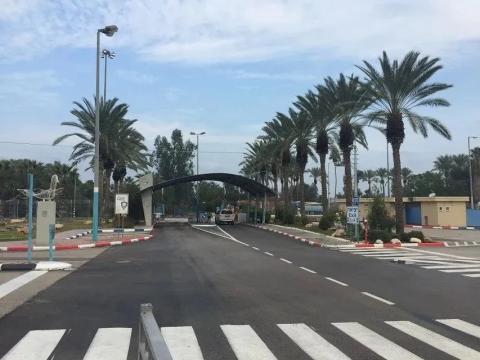
Leaving Tiberias on the shores of the Lake of Galilee in Israel, heading east across the Hussein Bridge, we arrived in Jordan from the northern pass of Israel. 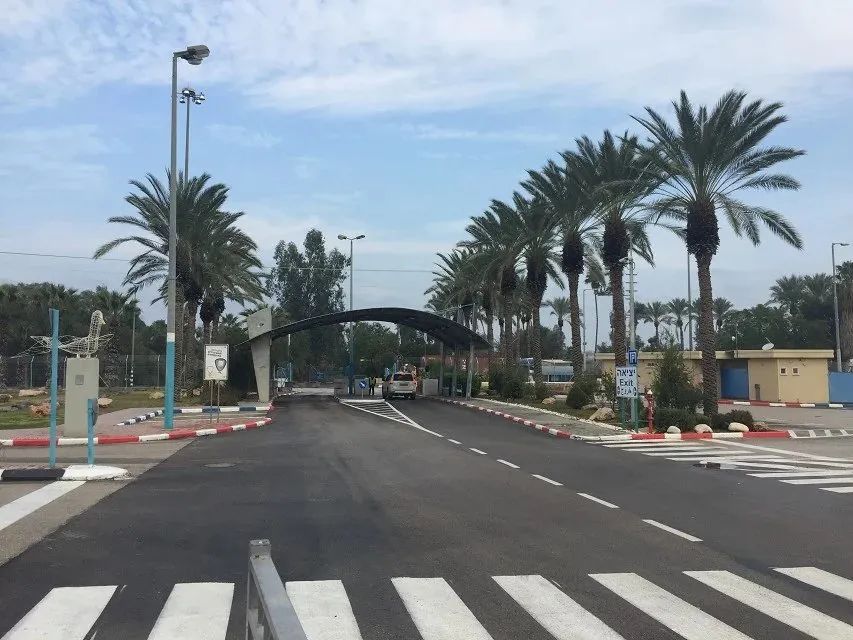 Jordan: Located in western Asia, northwest of the Arabian Peninsula, it is bordered by Palestine and Israel to the west, Syria to the north, Iraq to the northeast, and Saudi Arabia to the southeast and south. In the visa hall of Jordan, the pictures hanging on the wall are probably their old and new kings. 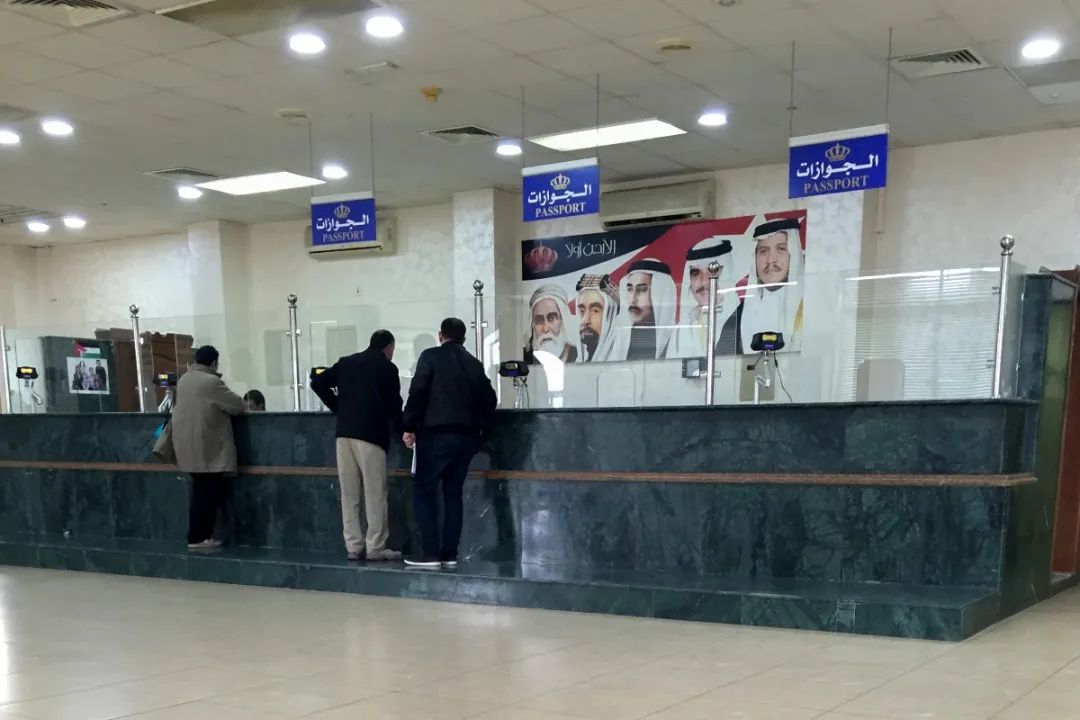 Jordan is a relatively small Arab country in the Middle East with extremely poor natural resources. It does not have a profound cultural and educational foundation like Egypt, Iraq and other ancient civilizations in the Arab world, nor does it have the rolling oil wealth of Arab oil-producing countries. Oil-free and water-scarce, it is one of the top ten countries in the world severely short of water. But it was the first Arab country to implement free and compulsory education from primary school to high school, and export technical talent to wealthy Gulf countries. The remittances these people send back to their countries have become an important source of funds for economic development. Jordan implements a free medical system for government employees, military personnel and their families, and a medical insurance system for enterprise employees. 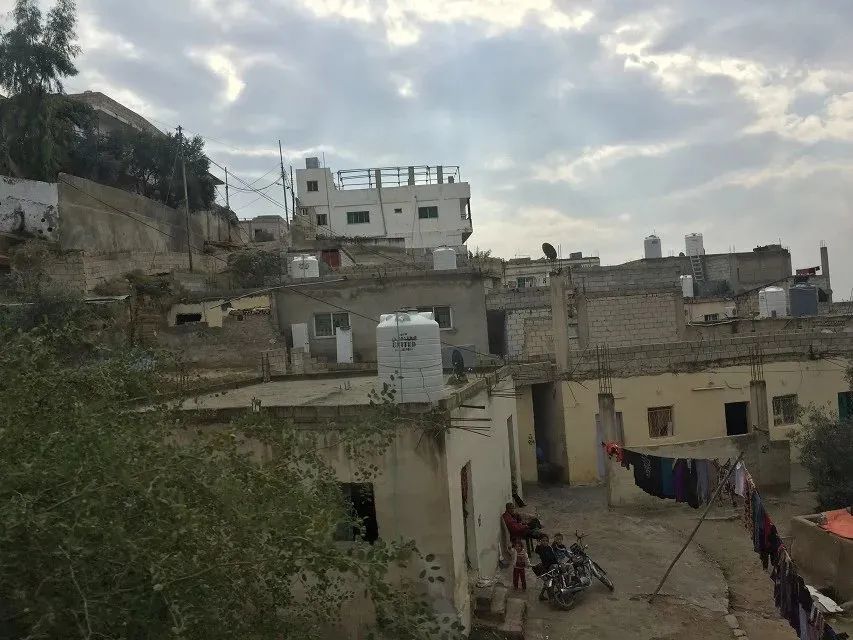 We walked south along the winding mountain road from the valley in northern Jordan. Along the way, we saw simple houses, but from a distance, the people there were smiling and full of happiness. The large white tank on the roof is used to store water, and the government delivers water once a week.       We are accompanied by police and local tour guides. Tourism is a major pillar of Jordan's economy, and a tourist police officer will follow you on the mountain roads through the Jordan Valley. This tour guide is a Muslim. No matter where he goes, he will pray in a fixed direction and in a fixed procedure at a fixed time. When the tour guide was praying, I was embarrassed to take pictures of him. In order to complete the travel report, I took the picture below online. During prayer time, Muslims face the direction of Mecca, the holy city in their hearts, and recite a passage from the Koran in Arabic: "Allah is great, Allaah is full of mercy, Allaah is worthy of praise; I admit that there is no one except Allah. There is no other true God; I recognize Muhammad as the prophet of Allah; come and pray, come and achieve success."  Visit the well-preserved ruins of an ancient Roman city, Jerash, one of the largest in the world. At this point you can understand why Jordan calls itself “Rome outside of Rome”. Facing the ruins, broken walls, and stone pillars that have endured several hardships but still stand firm, proud, and powerful, we can still clearly see the extraordinary majesty and splendor of the Roman Empire. 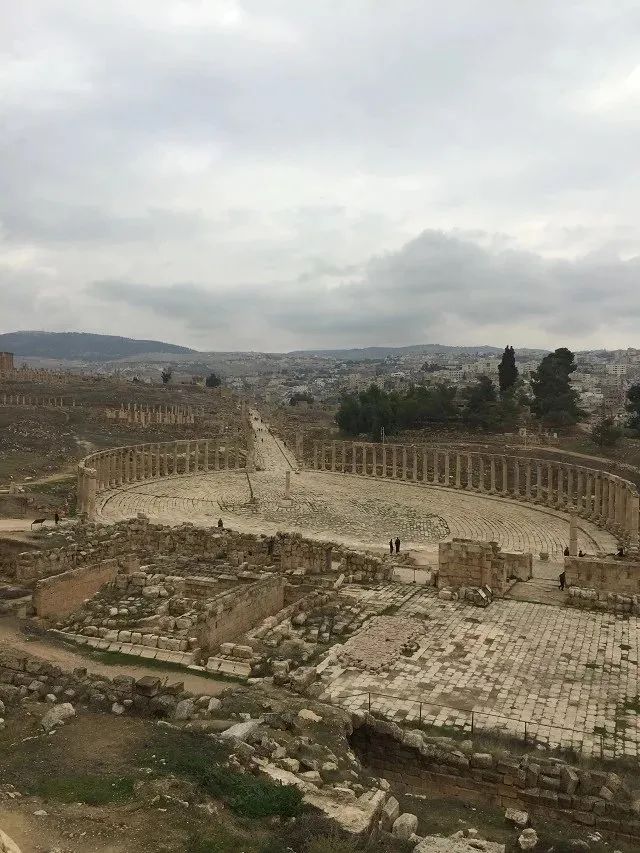
Hadrian's Arch (also known as the South Gate) was built around 130 AD to commemorate the inspection tour of Emperor Hadrian of the Roman Empire. Emperor Hadrian loved traveling. "The History of the Decline and Fall of the Roman Empire" wrote: "Hadrian's life was almost always on a never-ending journey." 
The ancient Roman amphitheatre,the largest of the three existing Roman ancient theaters in Jordan, can accommodate tens of thousands of people. In an era without microphones, they used their wisdom to solve the problem of sound transmission. No matter where you sit, the sounds of singing, reciting, and speeches on the stage can be clearly heard. It is still used for large-scale music and dance performances, and the annual Jerash Music Festival is held here.  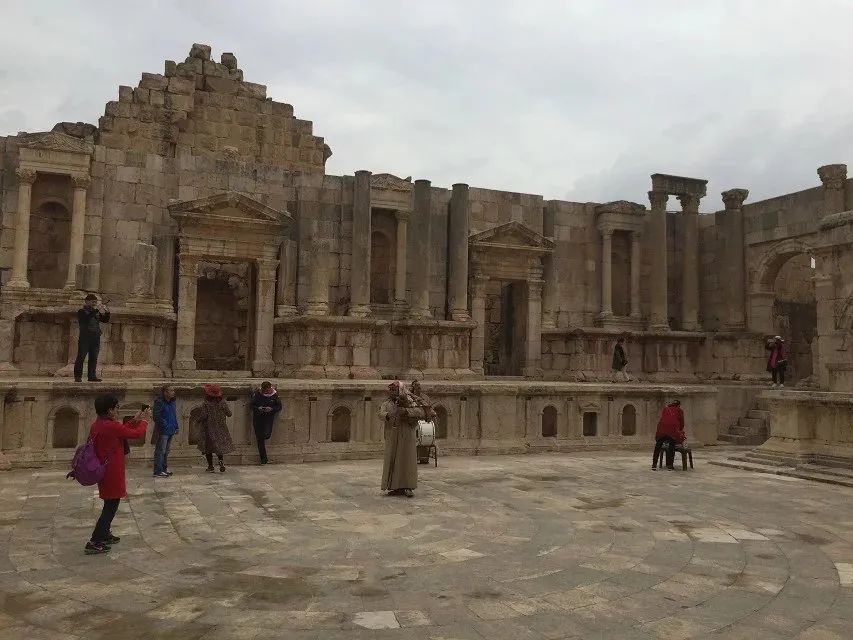 Avenue of Roman Columns. This marble-paved avenue has two deep scratches caused by being rolled over by wheels over the years, telling the story of that long history. 
The ancient city of Jerash in front of you is just a ruin. These ruins present thousands of years of ancient Roman history before your eyes, and thousands of years of ancient Roman achievements are deposited in the ruins. The Tigris and Socrates civilizations, ancient Greek civilization and ancient Roman civilization have been lost in the long river of history. Wandering through the ruins of this rich civilization, you can deeply feel the shock of that period of history.    The second stop of Jordan trip Castle Hill in the capital Amman Amman, the capital of Jordan, is located on seven hills, so Amman is also called the "City of Seven Hills". Most of the houses in Amman are built of milky white stone. There are beautiful concave and convex patterns on the stone. The tour guide said that these stones are all produced in Ma'an Province in the northwest foothills of Jordan, so they are called "Ma'an Stones".
 Castle Hill is one of the seven mountains in the urban area of Amman, the capital of Jordan. It is also the highest and oldest mountain in the urban area of Amman. Under the bright sun, the ancient Roman ruins of Castle Hill and the Jordanian capital complement each other, giving you the feeling of traveling through time and space.   
In the 2nd century AD, Antony Pius, one of the "Five Wise Emperors" of the ancient Roman Empire, took a fancy to the tall and steep terrain of Castle Mountain during a tour. On the top of the mountain, he dedicated a statue of his most worshiped Hercules (who saved Pulu). The god Michus) built a temple to worship him. The remaining huge pillars still show how tall and majestic the temple was back then.
 
This one is often featured on the cover of Amman tourist brochures. 
The most intact thing preserved on Castle Hill is this Orthodox church from the Byzantine period before the 14th century AD.
In the wilderness, there are ruins, old trees, and ruins. Looking at history with a smile, the clouds roll and relax; Enjoy life, flowers bloom and fall.

The "National Archaeological Museum of Amman" is located in the Castle Hill and is the smallest museum I have seen so far. Standing at this door, you can have a panoramic view of the entire museum.
 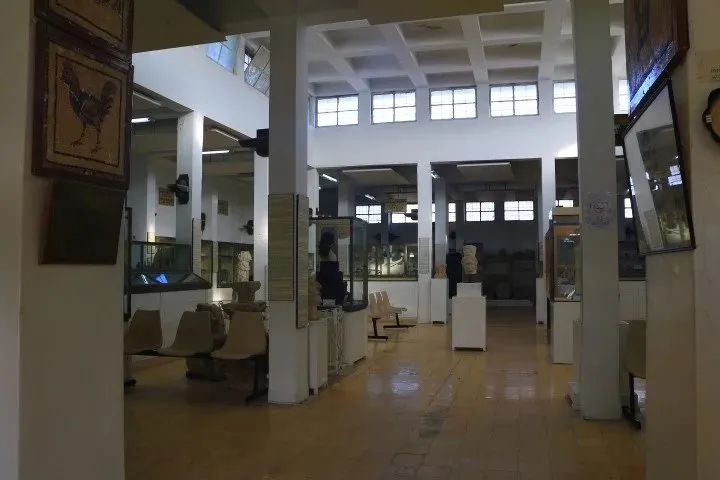 Petra, the City of Roses, is known as the eighth wonder of the ancient civilization. The ancient city of Petra (PETRA) is located 250 kilometers south of Amman, the capital of Jordan. It is hidden in a narrow canyon connecting the Dead Sea and the Strait of Akaba. It is built among the slightly pink rocky mountains, which makes it famous. The nickname of the City of Roses. It is the lost city in the mysterious valley. It is a dreamy kingdom carved into the rock. It has a radius of 20 square kilometers, and buildings such as temples, palaces and residences are all carved out of the rock, making it a spectacular sight. We only get a fleeting glimpse. Scenic area gate  A natural passage inside the gate winds deep and leads directly to the rock fortress on the mountainside. Entering the canyon, the corridors are winding and twisting, and the rocks on the cliffs seem to be chopped with knives and axes. The sunlight squeezed through the cracks in the rocks and shone on the rock walls, turning the rocks into a rose-red color. 
 Walking along the winding snake path in the mountain is like walking in a mysterious history.   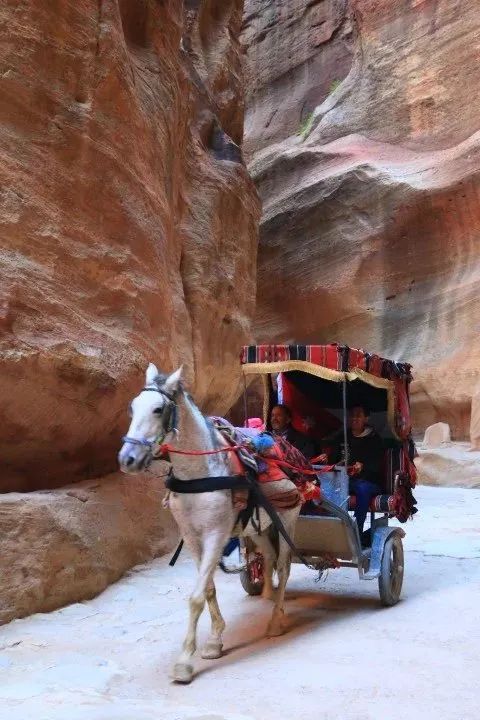 In front of nature, people are so insignificant. 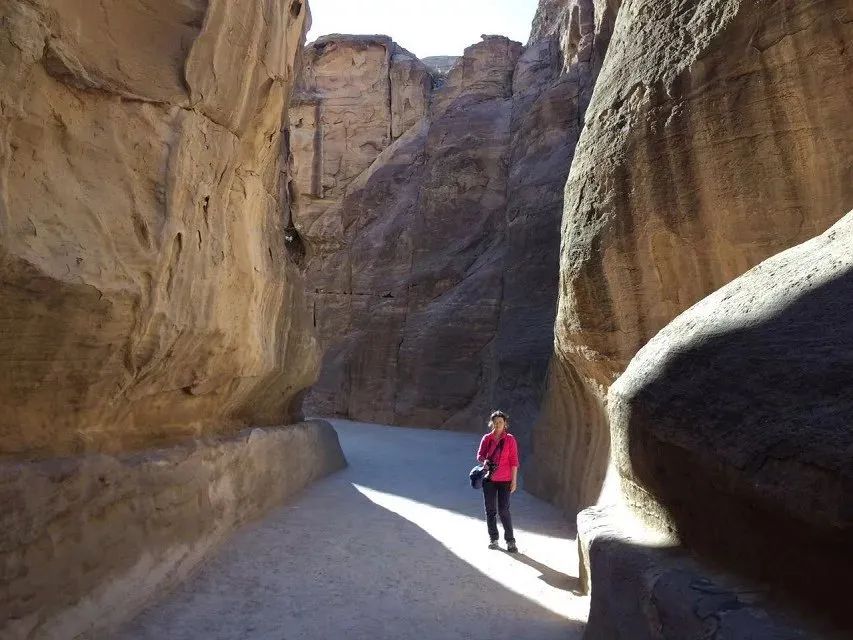 Passing through a long and narrow crack, the eyes suddenly opened up. A rose-red stone palace appeared in front of you. Looking up, you can feel its nobility and sophistication. It is said to have been built between the fourth and second centuries BC. The glory of the past is shocking, and the ruthlessness of the years is helpless. 
This building is called AL-Khazneh and has a history of 2,000 years. It is said that the wealth of the past kings of Petra was stored in it. Some people say that it is a mausoleum. Looking back at history, the Nabataeans, the builders of Petra, have always been a mysterious nation in the eyes of modern people, and this nation later ended up unknown. 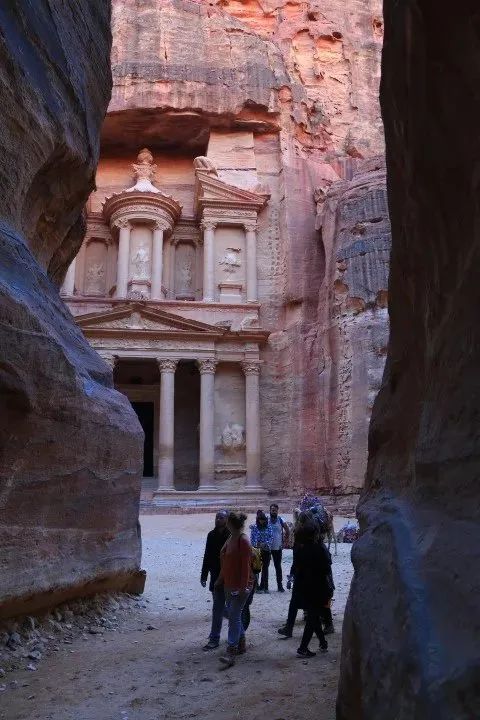 
Mosaic city Madaba. It is 33 kilometers southwest of Amman, the capital of Jordan, and is the city with the largest variety of mosaics in the world. On the floor of the St. George Orthodox Church in the town, there is this mosaic-inlaid map of the Middle East, the oldest existing map of the Middle East in the world. It is now very incomplete and damaged. You can find the locations on the original map by comparing it with the paper map placed at the door of the church. .    Happy mosaic maker. 
Mount Nebo: The Book of Deuteronomy in the Old Testament of the Bible records that “Moses ascended Mount Nebo from the plains of Moab to the top of Pisgah, which is opposite Jericho.” Moses, the founder of Judaism, spent the rest of his life here and ascended to heaven. Therefore, Judaism regards this as a holy place. Moses is the most important figure in Christianity after God and Jesus, so Christianity also respects this place as a holy place. At the same time, Moses is also one of the six ambassadors of Islam, and Islam also regards this place as a holy place. When you enter the mountain gate, you can't see how sacred it is. 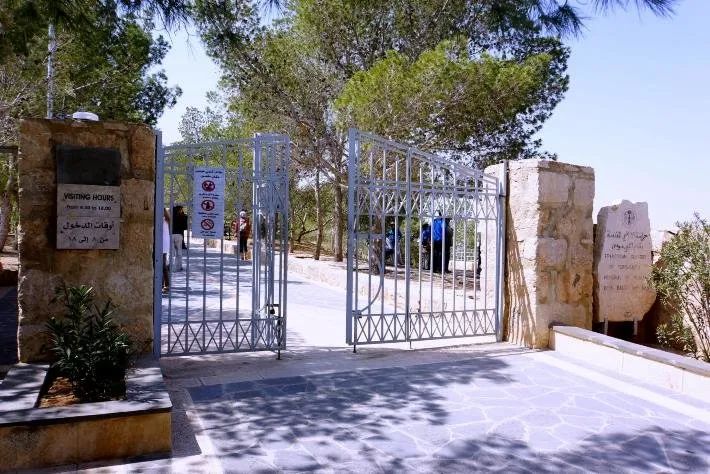 This was built for the visit of Pope Paul II to Mount Nebo. It records the renovation process of Mount Nebo and the record of the Pope's visit. The sides are layered, like a historical book. 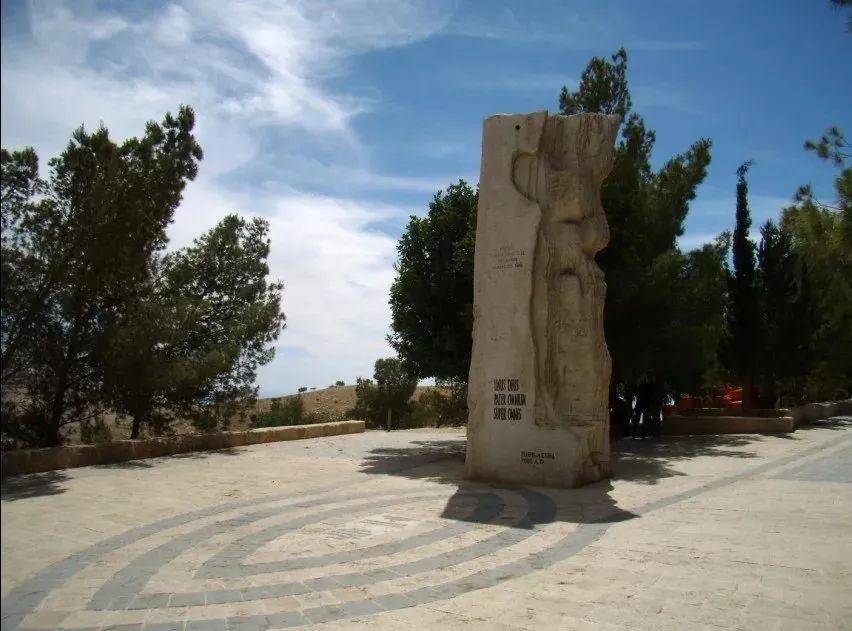 Monument commemorating the ascension of Moses into heaven. 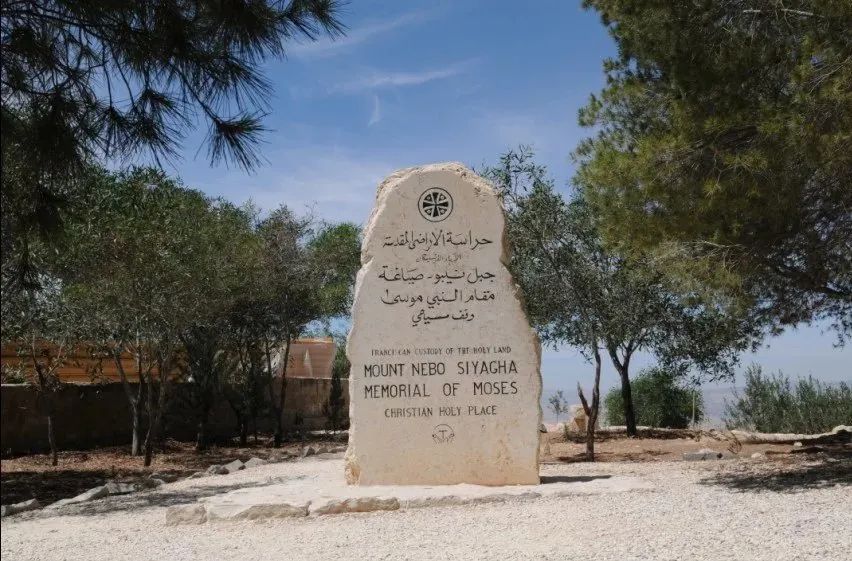 The olive tree planted by Pope Paul II was originally a tree of peace, but not long after the tree was planted, the Middle East became lively. Neither can the Pope.  The steel serpent cross that symbolizes the staff of Moses was erected in 1984 by Gianni Fantoni from Florence, Italy. There is a chapter in the Bible dedicated to the story of this snake. Come and have a look when you have time. 
Looking down into the distance is the Moses Valley where Moses led the Jews in their "exodus" from Egypt. That beautiful and spacious place, flowing with milk and honey, is now desolate. Looking to the west, you can have a panoramic view of the Jordan Valley, and in the distance is the famous Dead Sea. The tour guide said that if you are lucky, you can also see the holy city of the West Bank - the spiers of the Jerusalem Church and the historical city of Bethlehem; at night, you can enjoy the lights of thousands of houses in Jerusalem. What caught our eyes at this moment was the wilderness under the mist. 
 Leaving Jordan ended our trip to the Middle East.
 Middle Eastern people are all beautiful, with high nose bridges, big eyes, black hair, and the same skin color as us, which is very eye-catching and moisturizing. They were very smart. They invented Arabic numerals, gave birth to religion, created many miracles in the world, and left behind a lot of precious wealth.      
When I first entered the Middle East, I usually looked for Chinese restaurants there. The chef in the Chinese restaurant is from the Middle East, and he probably only knows three Chinese dishes. In every restaurant, slimy egg soup is placed in the center of the table. Eat local food instead. Just what I wanted. I believe that when traveling to different places, in addition to seeing different scenery, you must also taste different food. Food also carries a strong culture and records the trajectory of life. Vegetables are indispensable in Chinese food. But their vegetables are either eaten raw or pureed and mixed into sauces. There were a variety of different sauces on the table, but they looked like a mess and smelled unfamiliar. People don’t have the courage to take risks, so they generally don’t touch it. So, all the way here, we were like little white rabbits munching on the grass-like lettuce. Their pasta is similar to ours, and their freshly baked flatbreads are delicious.       
This handsome man's sizzling fried chicken with onions is very popular. 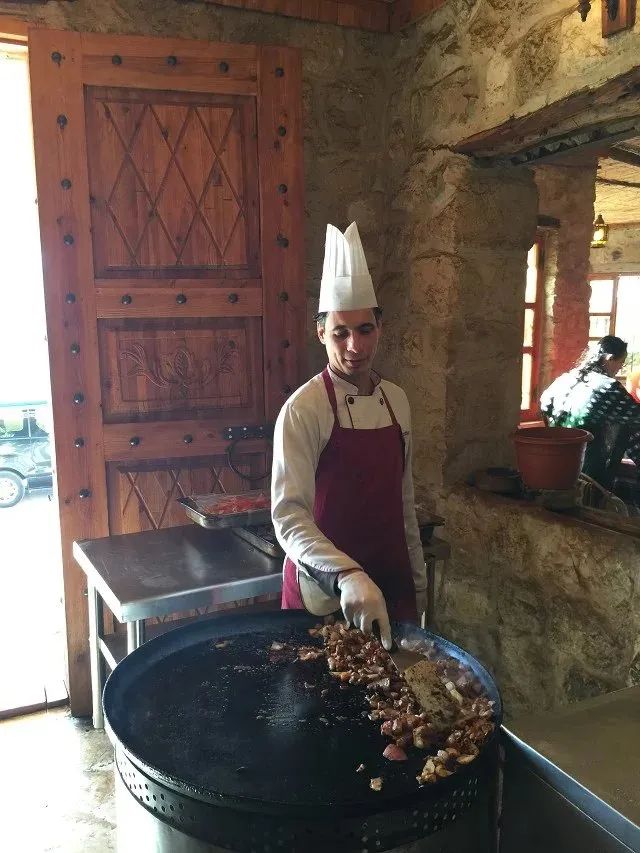  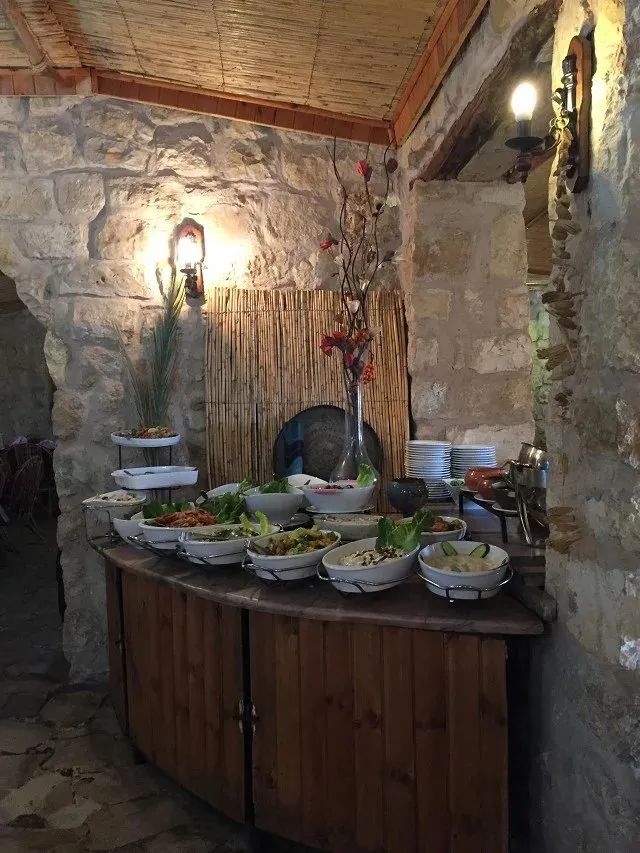  There is a popular song called "Persian Cat". In ancient Egypt, cats were worshiped as the incarnation and symbol of the moon goddess. During this trip to the Middle East, I felt the presence of cats deeply. I spent a long time taking photos of this black cat, and it always treated me with such disdain.  This kind of sight can be seen everywhere. Wild cats have shiny and chubby fur. Our domestic cats are not so rich. 
Walk to a waterless place and sit down to watch the clouds rise. Here I am, a once distant and mysterious land in the Middle East. But the history is too long, the culture is too rich, the religion is too complicated, and the disputes are too intricate. Although the distance has been shortened, the mystery remains the same. |

